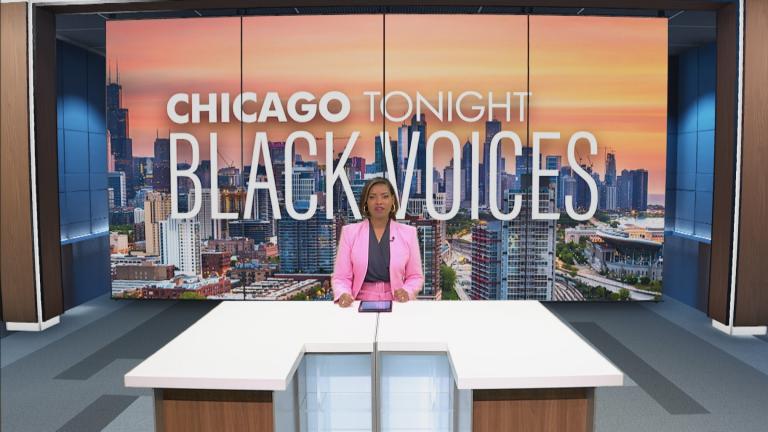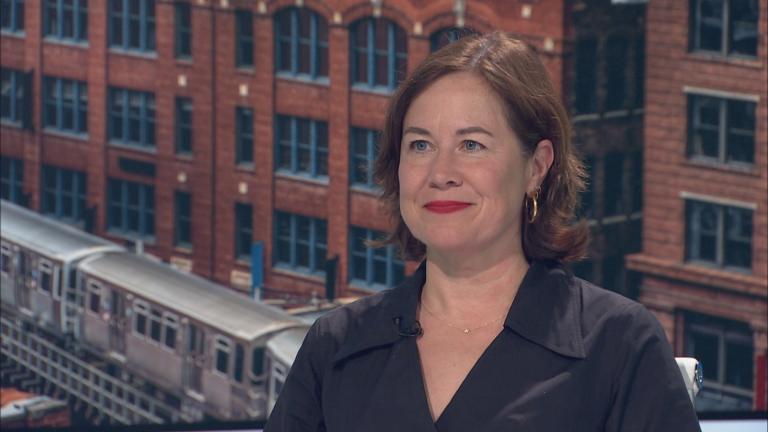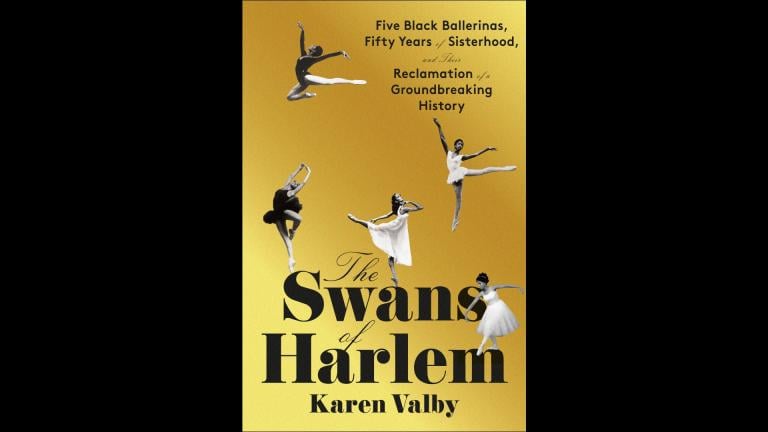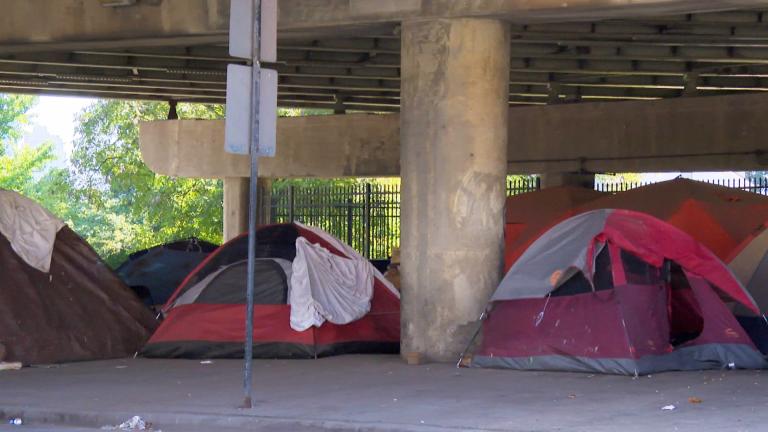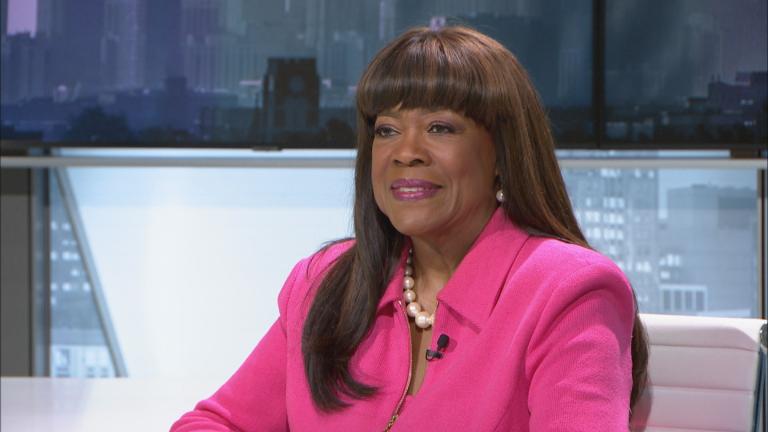The list of injuries and illnesses that present themselves in an emergency department on the South Side of Chicago is endless, from gunshot wounds and drug overdoses to young people suffering a stroke as a complication of COVID-19.
There’s been no doubt of the health inequities illuminated by the pandemic, as the COVID Tracking Project points to a death rate 1.4 times higher for Black people than White people. Those inequities and how health care systems contribute to them are the focus of the latest selection in our “Black Voices Book Club” series, “The Emergency: A year of Healing and Heartbreak in a Chicago ER.”
“What I wanted to do was lay bare to my patients the challenges that they face are not simply their own but are part of a larger system that structures our society and structures our health care system and in the process help them understand that we, as providers are right there with them and trying to see them for the people that they are and the challenges that they face, but also to step back and illuminate these larger structures to help them understand what it is that influences their health and ultimately their health care,” said author Dr. Thomas Fisher, an emergency medicine physician at the University of Chicago Medical Center.
Fisher dedicates his book to his patients and writes letters to them in an attempt to explain long waits in the Emergency Room, a lack of resources, and why he can’t spend as much time with them as he would like.
“The best part about being an emergency medicine physician is this intimacy of strangers. People come to me and tell me stories that are secrets that they hold from those closest to them, and they share them because they want to get better, that they know something is going wrong and they want help,” Fisher said. “They share not only these secrets about themselves, but they expose themselves fully personally and even allow me to touch them where it hurts, and take care of them in ways that reveal a humanity that’s stripped free of their title and their status in society, whether wealthy or poor, everybody wants exactly the same thing they want to be cared for when they're hurt, they want their mother to be taken care for carefully. They want their children to be healed.”
“The Emergency: A Year of Healing and Heartbreak in a Chicago ER” is on sale now. Below is an excerpt from the book.
February 2020
We had been waiting for the virus to appear in our ER, but when it did, a heavy pall still fell on the department. Unmasked nurses with long faces spoke in hushed voices and laughed nervously as the patient was directed to Room 41, a negative pressure room that had been designed in 2015 to contain Ebola. The negative pressure in the room keeps the patient’s air from contaminating the rest of the department, and the room has a window and microphone in the wall so that we can communicate with the patient while remaining safe outside. Before I entered the antechamber between the common ER hall and the room, I put on a yellow gown, an N95 mask shaped like a duckbill, and a disposable plastic eye shield that I placed over my glasses. The nurse, Fred, was similarly protected, and together we leapt from the safety of the boat into the dark abyss.
I first met the leviathan on New Year’s Eve less than two months earlier. “China investigates outbreak of atypical pneumonia that is suspected linked to SARS,” tweeted Agence France-Presse on the morning of December 31, 2019. At the time, I had been following foreign media for human signs of the flu that was culling a third of Asia’s hogs. But this was not swine flu. Rapidly spreading and deadly infections threaten everyone who works in emergency rooms. We fear the day that a panicked traveler shows up with a high fever and an unusual rash. In the time that it takes to figure out what’s going on they would be able to infect all the nurses and doctors who try to help. That nightmare keeps me vigilant for deadly viruses and outbreaks of hemorrhagic fevers no matter where they are on the globe, but so far, I had only experienced misses.
In 2001, when anthrax spores were mailed to politicians and journalists, our waiting room filled with healthy patients worried that they had been exposed to a “white powder.” Thirteen years later Ebola swept the world, and I drilled donning and doffing head-to-toe protective equipment for the seemingly inevitable febrile patient bleeding from their eyes and nose. As this unusual pneumonia bloomed into tens, then hundreds of cases, my curiosity turned into something else: fear. When The New York Times took note in a January 8, 2020, article nestled deep within the global health section, I forwarded the item to friends along with a caveat: “This may not be a looming pandemic, but when the next one occurs, this is how it will start.”
All of January and most of February elapsed before the first symptomatic patient arrived on the South Side, where I worked as an emergency room doctor at the University of Chicago. By then the coronavirus was dubbed COVID-19 and had infected people on every continent. At last, in late February, a febrile traveler named Terri came to us with a cough and a story. A flight attendant had coughed in her face on her way to Seattle, a city already besieged by the virus. As Seattle’s ICUs swelled with infected people, Terri, a middle-aged businesswoman, shook hands in meetings and dined with clients. On the flight back she broke into a fever and developed a hacking cough. After googling “best hospital in Chicago,” she grabbed a cab from Midway and came directly to our Emergency Department.
Terri coughed behind her blue surgical mask but greeted Fred and me in good spirits. Dwarfed by the proportions of Room 41, a room designed to accommodate a dialysis machine and a ventilator, she lay semi-reclined, red-faced and sweaty on the gurney. As she was complaining of body aches and nausea, I made a call to the hospital epidemiologist and ordered tests for the virus, a chest CT, and an admission to the hospital to keep her isolated until we confirmed her illness.
Terri’s vital signs remained stable despite a fever that Tylenol did not break. I could hear her cough through the closed double doors on her room—each time, my shoulders tensed. We tested our infection precautions every year, but even so, Fred forgot to take off his protective wear when he returned to the ER from the murky depths of Room 41. While he was sending blood to the lab for tests, Fred left the isolation room door open, setting off a squealing alarm. Sweating and nervous, he apologized repeatedly for these miscues. I told him that it was okay, but we both knew these social graces were meaningless. The virus doesn’t care about our apologies or forgiveness. Diagnosing and treating an illness we’d never seen before while keeping our lungs and mucus membranes safe was going to require vigilance and stamina.
A week later, Americans awoke to a society unraveling in the wake of the monster’s cross-- country frenzy. As the infection spread, businesses reduced hours, then closed altogether and laid off workers. On March 9 the stock market crashed. Deaths mounted from one to tens to a hundred. I canceled my boys’ trip to Vegas for March Madness. Our country’s retreat progressed from there. An NBA player tested positive; the NBA abandoned its season; then all sports seasons were terminated. Chicago Public Schools had fought to extend their year after a fall strike, but it soon sent kids home indefinitely. Drunk young people, slurring their speech and draped over one another, spread the infection over St. Patrick’s Day and pushed our governor to close bars and restaurants and prohibit all nonessential travel. By then the virus’s campaign had gripped the world’s economy, culture, and routines. Seattle nursing homes had been wiped clean; in Italy refrigerator trucks filled with bodies; my colleagues in New York were exhausted—and infected.
Friends across the country reached out for my advice on when to take their kids out of school or whether to take their planned vacation to Jamaica. I couldn’t make those decisions, but I did share my understanding of the situation and its risks. I directly addressed the misinformation emanating from Facebook and the White House—I told them that this would not quickly disappear and that it was not a hoax. Each time my friends asked how many people would die, I considered withholding information from the models that forecast millions of dead Americans. While that would have been soothing, obscuring key information from those I care about undermines lifesaving decisions. Offering that the equivalent of Denver could die in a matter of months stuck in my throat. Sometimes we had to end the call.
Then the plague closed in on me from another direction. On March 23 my uncle fell ill, and three days later he was admitted to the intensive care unit. Uncle Robert was the one who took me to Tigers baseball games and rode bikes with me when I was a kid. In retirement from teaching in the Detroit Public Schools, he developed a chronic illness and landed in a care facility that didn’t protect him. Like millions of other Americans who’d been warehoused or discarded—seniors, prisoners, migrant workers in airless camps—people who society preferred to keep out of sight, the virus fell on those bodies hard. Uncle Robert was lucky—after a few days of gasping in the ICU, he recovered. And then it came for the South Side.
COVID smashed through the South Side’s multigenerational homes. This is a neighborhood packed with people who didn’t have the sort of white-collar jobs that let you work from home—- with nothing but a frayed safety net to hold them if they fell, they had to risk their bodies just to keep from starving. And when they came home, they exposed the vulnerable elders who often lived with them. The devastation was a literal manifestation of the old truism “When America catches a cold, Black America gets pneumonia.”
Even back in January, I knew that the onslaught was inevitable. No matter how I prepared, I expected to be infected before it was over. Scores of physicians around the world had already died. As their lungs became stiff and wet, they were attended by peers rendered unrecognizable by protective garments. Li Wenliang, the thirty-four-year-old Wuhan doctor who alerted the world to the monster, was one of the first to die. A man about my age, facing down the pandemic just as I will, was lost in its wake. When I read about Li’s death, it strangely brought me back to 1999 and the killing of Robert Russ. I hadn’t thought about the story in years. Russ was around my age and was just about to graduate from Northwestern when a Chicago police officer shot him dead in a police stop. I didn’t know Russ; I’d only read about him in the newspaper, just as I was now reading about Li. But there were similarities in our lives that chilled me as I read his story: at the time we were both college-age Black men who faced traffic stops from the same police department. In both cases Russ and Li were innocent, both lost to a lethal scourge that strikes down victims who share a portion of their identity. Just as in 1999, I now searched for the balance between fear of death, anger at the unfairness, and comfort in the long odds.
The only question I had was: how sick will I become? The only certainty is that once I’m infected, I will be contagious, and I can’t risk passing the disease along to my family, my patients, or the woman I think I love. So the terrifying months ahead will be spent mostly alone. It feels cruel that I will be without human touch during the most stressful time of my life, but the alternative is to infect the people who mean the most to me.
Excerpted from The Emergency by Thomas Fisher. Copyright © 2022 by Thomas Fisher. All rights reserved. No part of this excerpt may be reproduced or reprinted without permission in writing from the publisher.

